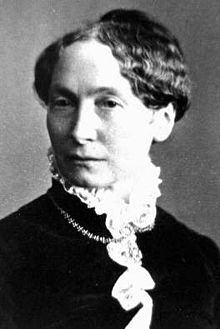Joseph Benzino

Joseph Johann Benzino (born April 11, 1819 in Landstuhl , † September 13, 1893 in Munich ) was a German businessman, art collector and politician.
Benzino was the son of the businessman Emanuel Ignaz Benzino (originally "Benzino di Como") and his second wife, Elisabetha Antoinette Wiest. His ancestors came from the area around Lake Como ; 1698 an Andrea (s) Benzino can be proven as an immigrant in Kusel . He is a relative of General Eugen Ritter von Benzino and Vice Admiral Wolfgang Benzino .
After his school days, which Benzino completed in his hometown, he learned the commercial profession in his parents' company. In his parents' house, art always had a high priority; In addition to house music, which was regularly cultivated, painting had a great influence on Benzino. His parents were enthusiastic about the work of the Nazarenes and the romantic painter Georg Philipp Schmitt from Heidelberg not only commissioned several pictures; he was also an occasional guest of the Benzino family. Benzino also got to know and appreciate the painters Theodor Pixis and Eugen Hess through his parents.
At the age of 23, Joseph Benzino married Mathilde, a daughter of the district doctor Ferdinand Muck, on November 5, 1842 in Landstuhl. This marriage remained childless.
The economic position of the company Ölfabrication Benzino & Söhne can be seen from the fact that, at the request of the royal Bavarian government of the Palatinate on January 5, 1854, the industrial exhibition examination commission for the Palatinate - as one of two - expressly to participate at the general industrial exhibition in the same year (July 15 - October 15) in Munich .
However, six years later at the Palatinate Industrial Exhibition (September 23 - October 14) in Kaiserslautern Benzino & Sons was no longer among the exhibitors mentioned. Benzino lived as a privateer in Landstuhl until he was elected to the Bavarian state parliament in 1863 as a member of a national-liberal party . As such, he was a member of this body until 1869. The social highlight of his political life was certainly the invitation to the royal table on the occasion of King Ludwig II's accession to the throne on March 10, 1864.
In the years 1867 to 1869 Benzino also worked as a member of the customs parliament in Frankfurt am Main . In order to give these political offices a social framework, Benzino had his house (built in 1841) enlarged from 1864 onwards. Benzino gave up this “upper-class” lifestyle in 1878 and settled in Munich with his wife.
Benzino had already found a representative house there in Theresienstrasse the year before . He kept his residence in Landstuhl as a kind of second home throughout his life. One reason for moving to Munich was Benzino's new area of responsibility. As a member of the royal Bavarian Central Painting Commission, the court often sought advice. Benzino examined u. a. Pictures or advised museums on the purchase of works of art.
In 1892, the Prince Regent Luitpold of Bavaria personally endorsed Benzino's appointment as royal Bavarian councilor . From this time on, Benzino was almost exclusively in charge of the Neue Pinakothek .
At the age of 74, Hofrat Joseph Benzino died on September 13, 1893 in Munich. After his burial on September 15, 1893, he found his final resting place in the northern cemetery of the Ludwig parish in Munich. After the death of his wife in 1903, he bequeathed his 150 or so paintings to what was then the trade museum in Kaiserslautern. This collection formed the basis of the museum known today as the Pfalzgalerie .
A street in Kaiserslautern and a park in Kusel are named after Benzino .
See also
literature
- Ludwig Dahl: Landstuhl. His past and present . Landstuhl 1908
- Hermann Klaue: The German oil milling . Leipzig 1913
- Theodor Knocke: Chronicle of the city of Landstuhl . Neustadt 1975
- Karl Lohmeier: Georg Philipp Schmitt. A romantic painter from the Palatinate . Kaiserslautern 1926
- Werner Weidmann : Highlights through economic history . Otterbach 1976
Web links
- http://villa-benzino.de/
- Joseph Benzino in the database of members of the Reichstag
| personal data | |
|---|---|
| SURNAME | Benzino, Joseph |
| ALTERNATIVE NAMES | Benzino, Joseph Johann |
| BRIEF DESCRIPTION | German merchant and art collector |
| DATE OF BIRTH | April 11, 1819 |
| PLACE OF BIRTH | Landstuhl |
| DATE OF DEATH | September 13, 1893 |
| Place of death | Munich |


